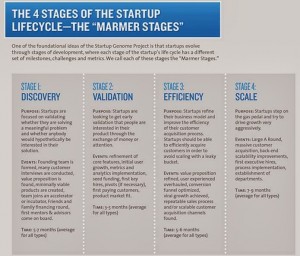Most entrepreneurs shun formality, but structure at the right time enables faster growth.
 |
| Zappos is known for its creative workplace |
Inside most start-ups, free-wheeling innovation and agility abound. The fewer the rules, the better. And why not? Unencumbered by bureaucracy, entrepreneurs can let their imaginations run wild, create breakthrough products, and make tons of money. Most entrepreneurs scoff at rigorous planning, analysis, or financial modeling found at larger companies—it just slows them down.
Thought leader, entrepreneur, and consulting associate professor at Stanford University Steve Blank agrees, saying today’s “lean start-ups” require less formality. (1) Rather than spending months on research and business planning, entrepreneurs list their educated guesses about the business opportunity and then validate them with prospective customers. Instead of old-fashioned project management that delivers a finished end product, engineers in start-ups practice “agile” development, constructing products incrementally through frequent iterations and customer feedback. Lean start-up approaches favor less structure, smaller teams, and highly creative environments.
But early traction does not guarantee long-term success. Once a new product shows potential, it must be property marketed, delivered, and supported at scale. The company must generate positive cash flow to be sustainable, and eventually pay a return to investors. These activities are very different than those taking place during the early creative process.
Stanford’s Start-Up Genome Project offered entrepreneurs a roadmap for successful company development. (2) After studying thousands of new ventures, researchers identified four distinct “Marmer Stages,” each with its own challenges and milestones:
The Discovery and Validation stages match the creative process described by Steve Blank: quick development and refinement of ideas, leading to early sales. But things change during the Efficiency and Scale stages. After verifying market acceptance of their initial product, founders must hone their business models, customer acquisition processes, and delivery processes. They must get funding, hire staff, and build infrastructure to support fast growth. Instead of spending “right brain” time imagining and creating, entrepreneurs must now spend “left brain” time analyzing and structuring.
Eventually all companies must evolve their management systems if they want to continue growing. (3) Informal management styles that worked well in the beginning break down as the company expands out of the entrepreneurs’ personal span of control. (4) Founders soon realize they can no longer do everything themselves; they must delegate tasks and coordinate the work of multiple groups. At this point, disciplines they implement serve to make organizational goals explicit and stable. Effective management systems facilitate goal alignment, resource allocation, accountability, learning, and control.
Surprisingly, it’s not creativity that rockets a start-up to success. Instead, research shows that greater discipline accelerates early-stage growth. Studies at Stanford and the University of California Berkeley concluded that deploying management systems associated positively with successful, high-growth start-ups. (5) Studying seventy-eight firms over a five-year period, they showed new ventures that implemented management systems grew at three times the rate of those that didn’t:
“Think about a car: the faster it goes, the more sophisticated the technology required to keep it under control. At the very elite racing levels, Formula 1 teams have highly complex and extensive systems infrastructure both on and off the tack. The same logic applies to growth with start-ups. The faster they need to go, the more management systems infrastructure they need.”
But timing is crucial. The Start-Up Genome Project found one of the most frequent causes of early business collapse was “premature scaling,” that is, ramping up before sales traction supported it. (2) Examples included hiring too many specialists, managers, and salespeople too quickly, and spending too much on marketing before validating the product-market fit. Just as entrepreneurs must adopt new disciplines to scale the business, they must also be disciplined about when to do it.
It seems counter-intuitive, but discipline, not creativity, is what ultimately drives growth. Creating and validating ideas is essential in the beginning, but a shift to effective and efficient execution at the right time becomes paramount. Entrepreneurs must understand this critical transition and adjust accordingly if they want the wild success that compelled them in the first place.
Excel-lens is a publication of Service Excellence Partners. Our unique approach helps founders at early stage companies better scale operations and manage growth. Contact us today.
Sources:
1. Blank, Steve. Why the Lean Start-Up Changes Everything. Harvard Business Review. May 2013, pp. 65-72.
2. Max Marmer, Bjoern Lasse Herrmann, Ertan Dogrultan, Ron Berman. Start-Up Genome Report Extra. s.l. : Stanford University, 2012.
3. The Five Stages of Small Business Growth. Neil C. Churchill, Virginia L. Lewis. May-June, 1983, Harvard Business Review, pp. 1-11.
4. Edward Lowe Foundation. The Significance of Second Stage. Cassopolis, Michigan : Edward Lowe Foundation, 2012.
5. Antonio Davila, George Foster, and Ning Jia. Building Sustainable High-Growth Startup Companies: Management Systems as an Accelerator. California Management Review. May 2010, pp. 79-105.

